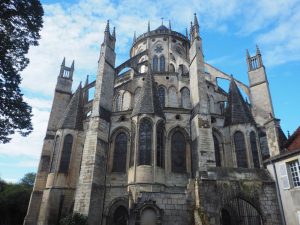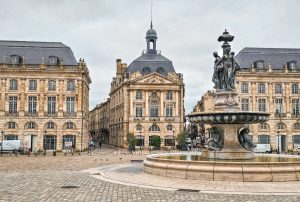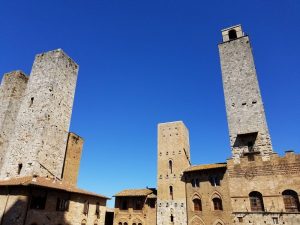Neolithic Flint Mines at Spiennes (Mons)
A site dating to thousands of years ago where flint was mined to create axes and other tools.

A site dating to thousands of years ago where flint was mined to create axes and other tools.

A grandiose 17th-century lighthouse meant both for navigation and for projecting an image of royal power.

A Romanesque masterpiece and the charming village around it, historically significant in terms of medieval Christianity.

A monastic community whose ideals of poverty and self-sufficiency are reflected in the structures they built.

A magnificent Gothic cathedral with stunning stained-glass windows.

A Romanesque church painted with vivid murals dating to the 11th and 12th centuries, important in the study of medieval Christian art.

A well-preserved classical Roman temple from the 1st century AD, dedicated to the heirs of Emperor Augustus.

An innovative hydraulic system that has provided clean water and power to Augsburg for centuries.

Of importance in terms of historical architecture and art, especially in churches, as well as for the unique ecosystem of the lake.

A landscape of tin and copper mines that played a significant role in the Industrial Revolution in the UK and the world.

Christian holy city with a 1000-year history as the endpoint of pilgrimage routes across Spain and France.

A 13th-century Gothic cathedral of extraordinary workmanship and beauty.

A grand 18th-century palace in an eclectic style, surrounded by grounds designed by Capability Brown. Also the birthplace of Winston Churchill.

The central plaza in Brussels, surrounded by beautiful old guild houses, a Gothic city hall and other impressive historical architecture.

Precisely-defined plots of land with distinct geological and climatic conditions that contribute to a centuries-old tradition of winemaking.

A Nazi extermination camp, now a place of remembrance of the atrocities committed by the Nazis in carrying out their so-called “Final Solution.”

A port city of opulent architecture, especially classical and neo-classical, and the center of a centuries-old wine-producing region.

Remains of the period when Tarragona was Tarraco, the Roman capital of the Iberian peninsula.

A large 12th-century Cistercian abbey, considered an artistic masterpiece with a blend of architectural styles.

Two towns that exemplify vernacular urban architecture of the Ottoman era.

A picturesque area of countryside and villages surrounded by a vineyard landscape; also an important pilgrimage stop.

Ruins of a Neolithic settlement 6000-9000 years old.

A Greco-Roman spa town and the enormous calcium terraces, waterfalls, basins and pools where it is located.

A classical temple with many original columns and the oldest Corinthian capital ever found.

A group of private Baroque palaces used by government in the 16th-17th-century to house visiting dignitaries.

46 charming traditional villages connected by a network of cobbled paths, arched bridges and stone staircases.

A 12th-century cathedral with a mix of Romanesque and Gothic elements.

Eight Sicilian towns that were rebuilt in a distinctive Late Baroque style after a 1693 earthquake.

A beautiful vineyard-covered landscape of terraced hillsides, almost a thousand years old.

A 16th-century villa with a garden that epitomizes the Renaissance aesthetic in garden design.

Ruins of an ancient town, much of it Roman-era, and birthplace of the cult of Venus.

A strategically-important port city dominated by two Venetian fortresses and showing influences from later French, British and Greek rule.

A charming medieval town known for its tall towers and Sienese Gothic artworks.

A monument of religious architecture from the Carolingian period of European unification under Charlemagne.

A small city where influences from three different world religions are visible in its architecture and art.

The remarkably-preserved remains of ancient Roman cities destroyed in a sudden eruption of Mount Vesuvius.